
Neurosonology and Cerebral Hemodynamics
Scope & Guideline
Advancing the Frontiers of Neurovascular Research
Introduction
Aims and Scopes
- Neurosonology Techniques:
The journal covers advancements in neurosonology, including the use of ultrasound imaging to assess cerebral blood flow and diagnose neurological conditions. - Cerebral Hemodynamics:
Research on cerebral hemodynamics, including the study of blood flow dynamics in various neurological disorders, is a core area, with a focus on both invasive and non-invasive measurement techniques. - Clinical Case Studies:
The journal publishes clinical case studies that provide insights into rare neurological conditions, their diagnosis, and treatment outcomes, contributing to the clinical understanding of complex cases. - Interdisciplinary Collaboration:
The journal promotes interdisciplinary research and collaboration among neurologists, cardiologists, and other healthcare professionals to enhance patient management and treatment strategies. - Rehabilitation and Neuroplasticity:
Research on rehabilitation techniques, including the use of technology and innovative therapies, is a significant focus, particularly in the context of neuroplasticity and recovery from neurological injuries.
Trending and Emerging
- Cognitive Load Assessment:
There is a growing interest in assessing cognitive load and psycho-emotional states, particularly in high-stakes environments like unmanned aerial vehicle operation, signaling a trend towards understanding cognitive function in various contexts. - Interventional Techniques in Stroke Management:
Emerging research focuses on collaborative approaches in stroke management, particularly the integration of cardiology and neurology, which is crucial given the increasing incidence of cerebrovascular accidents. - Impact of Technology on Rehabilitation:
Research is increasingly exploring the role of technology, such as video games, in neurorehabilitation, highlighting innovative approaches to enhance recovery and patient engagement. - Management of Comorbidities:
There is a rising trend in examining the interplay between neurological conditions and comorbidities, especially in patient populations with complex health profiles, underscoring the need for comprehensive management strategies. - Advanced Imaging Techniques:
The adoption of advanced imaging techniques, including duplex sonography and intraoperative neurophysiological monitoring, is on the rise, reflecting the journal's commitment to cutting-edge diagnostic and therapeutic methodologies.
Declining or Waning
- Traditional Surgical Techniques:
There appears to be a decline in publications focused on traditional surgical techniques in neurosurgery, as newer, less invasive methods gain traction in the field. - Basic Neurological Studies:
The emphasis on basic neurological research has decreased, with more focus shifting towards clinical applications and immediate patient care outcomes. - Generalized Case Reports:
There is a waning interest in generalized case reports without significant novel findings, as the journal increasingly prioritizes studies with clear implications for clinical practice. - Single-Disease Focus:
Research that focuses solely on single diseases without a broader interdisciplinary context is becoming less common, reflecting a shift towards more integrative approaches in understanding neurological conditions. - Historical Reviews of Neurological Practices:
Fewer articles are being published that review historical practices in neurology, indicating a preference for current methodologies and future directions in the field.
Similar Journals

Iraqi Journal of Hematology
Your Gateway to Hematology ExcellenceIraqi Journal of Hematology is a prominent peer-reviewed open-access journal dedicated to advancing the field of hematology. Published by Wolters Kluwer Medknow Publications, this journal provides a platform for researchers, professionals, and students to share cutting-edge findings and developments in various aspects of hematology, including blood diseases, diagnostics, and innovative treatments. Since its transition to open access in 2016, the journal has significantly increased its reach, allowing for wider dissemination of critical research to a global audience. With an ISSN of 2072-8069 and an E-ISSN of 2543-2702, the Iraqi Journal of Hematology strives to adhere to the highest scholarly standards and plays a vital role in the ongoing discourse in hematological research. Researchers are encouraged to contribute to this essential resource for the scientific community, contributing to the advancement of knowledge that ultimately improves patient care and treatment outcomes.

BIORHEOLOGY
Transforming Knowledge of Biological MechanicsBIORHEOLOGY is a peer-reviewed journal published by IOS PRESS, dedicated to the interdisciplinary field of biorheology, which studies the flow properties of biological fluids and the mechanical behavior of biological tissues. With its ISSN 0006-355X and e-ISSN 1878-5034, this journal has been a vital source of scientific knowledge since its inception in 1965, with coverage extending to recent years and into 2024. As a respected publication within the realms of physiology and biochemistry, it is classified in Q4 in both Physiology and Medical Physiology categories as of 2023, showcasing its niche position within the academic community. The journal primarily aims to disseminate research findings that advance our understanding of biorheological principles and their applications in medicine and biology. Although not listed as open access, BIORHEOLOGY provides essential insights to researchers, professionals, and students eager to explore the complexities of fluid mechanics in biological systems, making it a valuable resource for fostering innovation and collaboration across scientific disciplines.

LATERALITY
Decoding the Mysteries of Lateralized CognitionLATERALITY is a renowned academic journal published by Routledge Journals, Taylor & Francis Ltd, focusing on the intricacies of lateralized brain functions, behavioral asymmetries, and their implications across various fields including psychology, medicine, and the arts and humanities. Since its inception in 1996, the journal has carved a niche for itself, maintaining an impressive Q2 rating in Arts and Humanities and notable placements in the various categories of medicine and psychology as of 2023. With a Scopus rank placing it among the top journals in its category, it consistently provides cutting-edge research and insights into the cognitive and neurological underpinnings of laterality. Although it does not adopt an open-access model, the journal remains accessible to a global audience interested in advancing their understanding of lateralization and its multifaceted relevance. The scholarly contributions propelling the aims of LATERALITY not only serve to illuminate complex biological and psychological processes but also foster interdisciplinary dialogue, making it an essential publication for researchers and professionals dedicated to exploring this dynamic field.
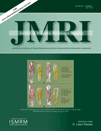
JOURNAL OF MAGNETIC RESONANCE IMAGING
Transforming Medical Imaging with Groundbreaking Studies.JOURNAL OF MAGNETIC RESONANCE IMAGING (ISSN: 1053-1807; E-ISSN: 1522-2586), published by WILEY, stands as a leading academic platform in the field of Radiology, Nuclear Medicine, and Imaging. With an impressive impact factor that reflects its Q1 ranking in the respective category and a notable Scopus rank of 30 out of 333 journals, this journal serves as a critical resource for cutting-edge research and innovative practices in magnetic resonance imaging. Since its inception in 1991, it has provided a repository of high-quality research, reviews, and clinical applications aimed at enhancing the understanding and technological advancements within the imaging community. Although it does not offer Open Access, the journal's comprehensive approach ensures that professionals, researchers, and students alike can gain crucial insights and contribute significantly to the evolving landscape of medical imaging. With a commitment to excellence and relevance, the journal continues to push the boundaries of knowledge and practice in its field.
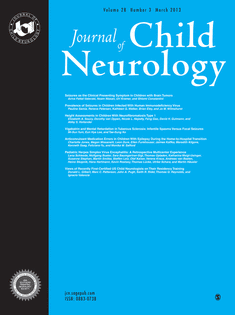
JOURNAL OF CHILD NEUROLOGY
Advancing the Frontiers of Pediatric NeurologyThe JOURNAL OF CHILD NEUROLOGY is a distinguished publication in the critical fields of neurology and pediatrics, published by SAGE PUBLICATIONS INC. With its ISSN 0883-0738 and E-ISSN 1708-8283, this journal has been a pivotal resource since its inception in 1986, serving the needs of researchers, clinicians, and students dedicated to advancing the understanding and treatment of neurological disorders in children. As evidenced by its impressive Q2 rankings in both Neurology (clinical) and Pediatrics, Perinatology, and Child Health, the journal has established a reputable position within the academic community, ranking in the 75th percentile for pediatrics and the 53rd percentile for clinical neurology. This periodical not only contributes to the body of knowledge in child neurology but also promotes interdisciplinary collaboration, engaging a global audience through innovative research articles and case studies. Although the journal is not open access, it remains committed to disseminating high-quality research aimed at improving pediatric health outcomes, making it an essential read for professionals and researchers dedicated to this crucial area of medicine.
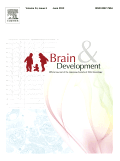
BRAIN & DEVELOPMENT
Fostering Innovation in Pediatric Brain HealthBRAIN & DEVELOPMENT is a prestigious academic journal published by ELSEVIER, renowned for its pivotal contributions to the fields of developmental neuroscience, neurology, and pediatrics. Established in 1979, this journal has become an essential resource for researchers and clinicians alike, as it explores the complexities of brain development and associated neurological disorders in children. With an impactful focus on advancing scientific understanding, BRAIN & DEVELOPMENT is currently ranked in the Q3 quartile in Developmental Neuroscience and Clinical Neurology and Q2 in Pediatrics, reflecting its significance within the medical community. Its ISSN 0387-7604 and E-ISSN 1872-7131 underline its established presence in academic literature. While the journal does not offer open access options, it continues to be a key platform for disseminating new research findings and fostering innovation in the understanding of pediatric neurological health. The journal's commitment to quality research is further evidenced by its ongoing publication trajectory up until 2024, making it a vital source of knowledge for students, professionals, and educators in related fields.

Indian Journal of Hematology and Blood Transfusion
Elevating Knowledge: Your Source for Hematology ExcellenceIndian Journal of Hematology and Blood Transfusion, published by SPRINGER INDIA, serves as a leading platform for disseminating original research, reviews, and case studies in the field of hematology. With an ISSN of 0971-4502 and E-ISSN 0974-0449, this journal has been instrumental in advancing knowledge from 2000 to 2024, providing insights into critical issues surrounding blood disorders and transfusion practices. Currently ranked in the Q3 category for Hematology for 2023, it reflects a commitment to high-quality scientific content amidst a competitive landscape where it ranks 97/137 in Scopus for Medicine - Hematology, placing it in the 29th percentile of its peers. The journal primarily addresses a diverse readership, including researchers, healthcare professionals, and students, aiming to foster innovation and collaboration within the field. Although it operates under a subscription model, access options for individual articles and institutional subscriptions ensure that valuable research is disseminated widely to enhance medical practice and education in hematology.
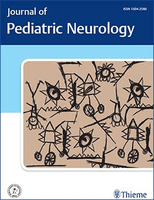
Journal of Pediatric Neurology
Exploring innovative therapies for young minds.Journal of Pediatric Neurology, published by GEORG THIEME VERLAG KG, stands as a dedicated resource in the field of pediatric neurology, navigating the complex interplay of neurological and developmental disorders affecting children. With its ISSN 1304-2580 and E-ISSN 1875-9041, this journal has been a pivotal platform for advancing research since its inception in 2003, and continues to present critical findings and discussions up to 2024. Although currently categorized in the Q4 quartile for both Neurology (Clinical) and Pediatrics, Perinatology and Child Health within Scopus rankings, the journal's commitment to fostering scholarly dialogue is essential for researchers, clinicians, and students dealing with pediatric patients. Its structured coverage of various neurological disorders, treatment strategies, and innovative therapies contributes to the broader understanding of pediatric neurology, despite the challenges noted in its ranking percentile. By encouraging submissions from diverse disciplines, the journal aims to enhance clinical practice and bridge gaps in knowledge, ensuring a multidisciplinary approach to child health and development.

Journal of Hematopathology
Innovating research in hematology and pathology.The Journal of Hematopathology, published by SPRINGER HEIDELBERG, serves as a vital resource in the fields of hematology, histology, and pathology. Established in 2008, this peer-reviewed journal aims to foster the exchange of knowledge among researchers, clinicians, and students by publishing original articles, reviews, and case studies that contribute to the understanding of hematopathological disorders. While the journal currently ranks in the fourth quartile in various categories including hematology and histology, it positions itself as a platform for emergent research and insights, addressing the evolving landscape of blood-related diseases. Although not an open access journal, it provides crucial access to research findings for professionals looking to stay abreast of developments in pathologic diagnostics and therapeutic strategies. As it continues to grow, the journal remains committed to enhancing the knowledge base and scientific discourse in hematopathology.
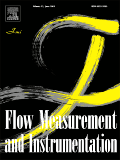
FLOW MEASUREMENT AND INSTRUMENTATION
Connecting Theory and Practice in InstrumentationFLOW MEASUREMENT AND INSTRUMENTATION, published by Elsevier Science Ltd, serves as a vital resource for researchers and professionals in the fields of Instrumentation, Electrical and Electronic Engineering, Computer Science Applications, and Modeling and Simulation. With an impressive trajectory since its inception in 1989 and extending to 2024, this journal has gained a notable reputation, ranking in the upper quartiles of various categories within the 2023 Scopus metrics, reflecting its significant contribution to advancing knowledge in flow measurement technologies and methodologies. Although it does not offer Open Access options, the journal is well-regarded for its rigorous peer-review process, ensuring high-quality, impactful research dissemination. The journal's emphasis on empirical studies and innovative instrument design establishes it as an essential platform for disseminating cutting-edge findings that facilitate practical applications and inform future research directions. Positioned within the United Kingdom, it attracts a global readership dedicated to the continuous enhancement of measurement sciences and engineering innovations.